A tool belt is a piece of equipment used by workers to store tools in them while they are working. A person who works with their hands often wears it for convenience during work, so that all the important implements can be reached quickly and safely without having to look around or bend down every time something needs attention.
The tool belt is a crucial part of the construction worker’s uniform. It holds all the tools and equipment they need in order to do their job well and safely. But, how do you wear it? This blog post will teach you everything you need to know about wearing your tool belt properly. Experts are going to discuss the different styles of belts, how to tie them securely, what tools should go where, and more!
Wearing a Tool Belt Properly
When you wear a tool belt, it is important to tie the belts around your waist so that they are close enough to be able to reach all of your tools easily.
One more problem is when it’s too short/long – it may be uncomfortable if there isn’t enough room between where it buckles on your waist and where the pouch sits against your back. If the belt is too long, it can hit your leg as you move around.
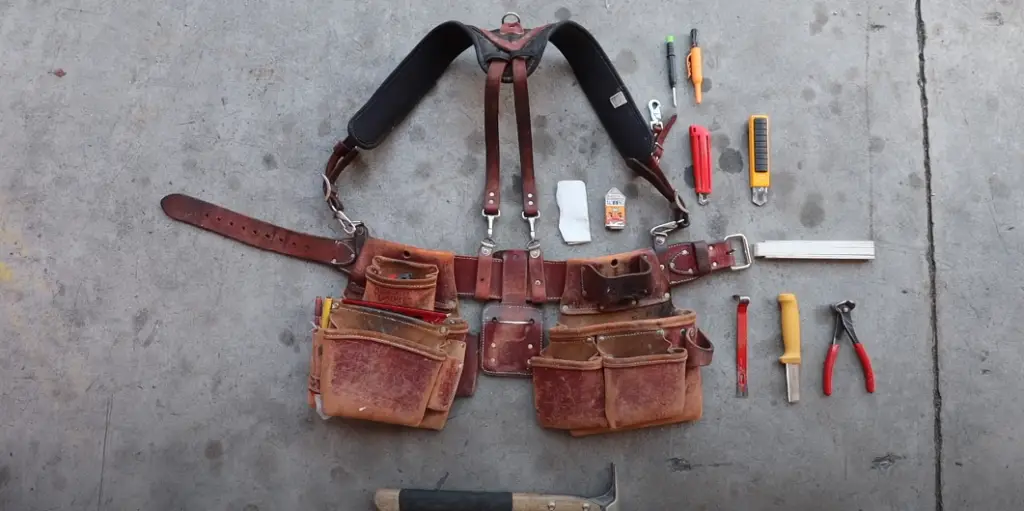
Also, it shouldn’t rub or chafe against your skin and should have a padded waistband to prevent discomfort from sitting down.
When wearing a tool belt, try not to have too many pockets as this may cause bulkiness that could actually restrict movement. If needed, consider purchasing two separate tool belts for different projects or situations instead of one with multiple pockets.
The most common mistake people make when using their tool belts is putting them on backward! Make sure that both straps cross over in front and attach securely at the back before starting work. The left strap should go across the right hip while the right strap should go across the left side of your stomach (if you are looking into a mirror).
Wearing a Tool Belt with Suspenders
Tool belts with suspenders are nice if you need extra support or want an easier time getting your belt on and off as it comes with adjustable straps. However, they still may not provide enough support even when worn properly around the waistline. The weight will cause discomfort and back pain because of how heavy tool belts typically get especially if there is no padding included within the fabric itself. This could potentially leave marks from where parts sit against your body all day long that can irritate the skin over time.
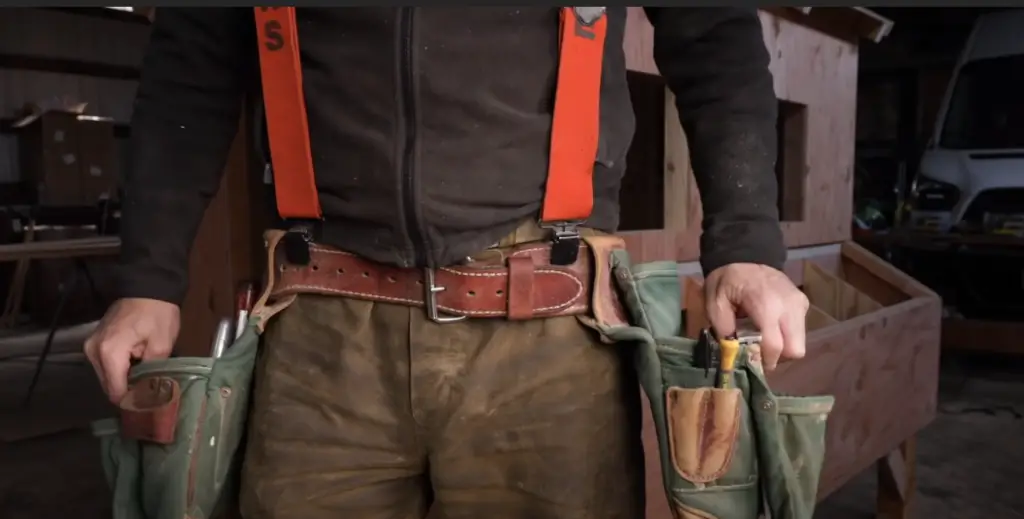
Suspenders can be the ideal choice for anyone who wants to stay comfortable while wearing a loaded tool belt. Tool belts can get heavy, especially when you have several tools in them. Suspenders help redistribute weight across your shoulders and back so it feels much lighter overall. They also give support to those with bad backs because they take some of that pressure off your spine.
Especially when you’re working overhead, suspenders are the ideal choice. They give your shoulders more room to move and don’t get in the way of reaching for tools or doing any tasks that require mobility. This is especially important if you plan to use a tool belt with pouches attached at chest level so they won’t interfere while trying to reach them. In addition, it’s easier to put tools back into their pouch when they aren’t being weighed down by gravity pulling them downward.
Suspenders take some getting used to but once you get acclimated they provide enough benefits that everyone should consider wearing them with their tool belt.
Because tool belts should only be used by those who know what to do with them, you may not need suspenders if your belt is high enough on the waist. A tool belt that sits at your hips will be easier to get on and off than one with longer straps or ties because it can easily come undone while working in multiple directions. Tool belts worn higher up are also more comfortable overall especially when extended for long periods since there isn’t any pain coming from where the tools attach themselves against parts of the body during work.
Things to Consider When Buying a Tool Belt to Avoid Pain
Keep the weight of your tools in mind. The most important factor to consider before buying a tool belt comes down to how much weight you plan on carrying around while using it daily. If you just want something light-weighted that holds items like screwdrivers, pens, pencils, markers, measures, batteries, etc., then a smaller belt is sufficient enough. For the more hardcore users, a tool belt with suspenders will be best for you to avoid pain and discomfort from the extended use of carrying around heavy tools all day long. If possible, try borrowing different tool belts from friends or family members so that you can get an idea of which one is best suited for you.
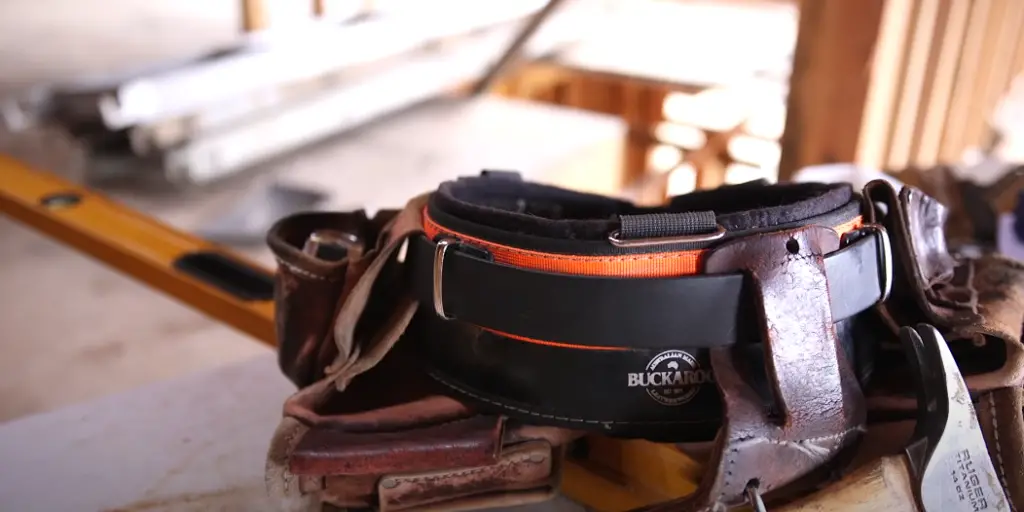
Take note of the quality and sturdiness of your tool belt. If you buy a cheap product, chances are it will fall apart after only several uses, which would be inconvenient for you because then your tools may slip out or get damaged. Instead, invest in a better quality one that is built to last so that you have more savings in the end!
Consider whether you prefer an adjustable fit or specific sizing with most tool belts. Some people do not mind investing their time into adjusting straps every day but others want simplicity by just popping them on without any hassle at all. Make sure you know what kind of person you are before making this purchase as it could save yourself some trouble down the road.
Think about how you are using your tool belt. Are you simply placing tools in it or do you also want to carry around items like sunglasses, knives, and other accessories? You need to make sure that the pockets on your tool belt can accommodate all of what you plan on putting into them so that they don’t just turn out being useless.
It is important to think about where exactly you will be wearing this belt. If most of your work will be done outdoors then a leather one would suit best as it does not absorb water that could potentially rust all of your tools inside if left outside for long periods of time. A nylon alternative however might serve better if working indoors more regularly but either way – there are so many options now available.
Try to think about if you would want a belt loop or not. This is especially relevant for electricians because they may prefer having their tool belts specifically hanging on the side of them instead of around their waist so that it does not get in the way during wiring tasks. It just depends on what your preferences are – do some research before making this final purchase.
If possible, try asking other people who work with tools regularly which one works best for them and why! You might be able to find out more information regarding certain brands as well as how much use they can stand up against depending on where exactly they were used (indoors vs outdoors). Ask questions like “When was the last time somebody had to replace theirs? What did they change about it? What were the main reasons why did they have to replace their old ones in the first place?”
Summing up, you should always look out for these 4 things when buying one:
- Durability – which means the belt should be able to hold a lot more than just your tool essentials;
- You should look for one that is comfortable and ergonomically designed so it does not feel like extra weight on top of everything else you are already carrying around (this can get very tiring);
- Make sure the pockets are deep enough since having something fall out every time you bend down will be irritating;
- Always check if they come with storage options like loops or even hammer holders that also keep them in place while working;
FAQ
Do you actually need a tool belt?
Yes, and they are really handy! If you ever do any work around the house or on your car like changing brakes or an oil change, having a pocket to store everything in makes it easier. This also applies to other areas like construction, building furniture, or even painting.
Tool belts are not just for men either although they can be a manly accessory. This is not the case, however. The key factor here is its purpose and if you need one then go ahead!
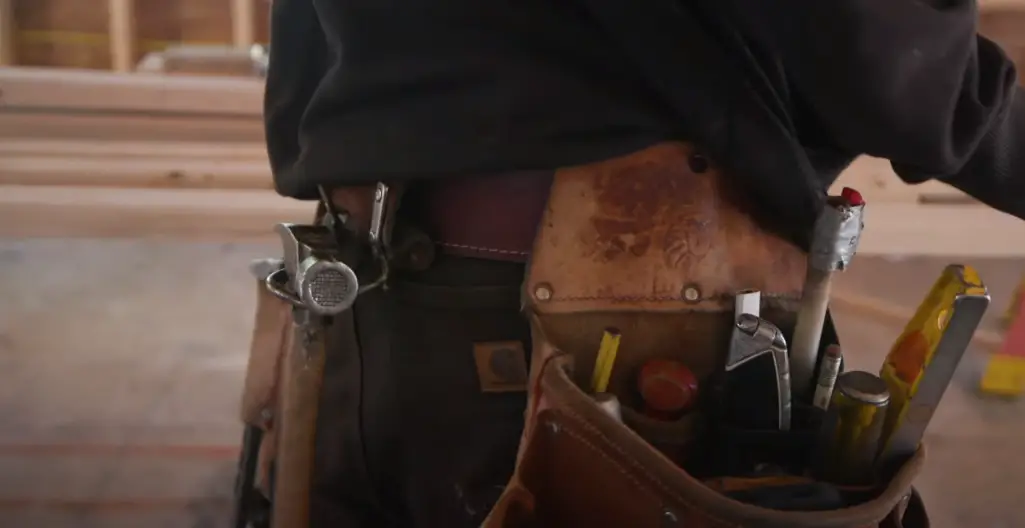
There are many different types of tool belts available but what matters most is comfort, quality, and how big your pockets are since that will determine how much you can carry around with ease. These come in various styles so take into account exactly what kind you want before making a purchase decision as there are some unique features only certain ones have depending on their type.
Is wearing a tool belt bad for your back and shoulder?
The truth is, you will definitely feel uncomfortable when wearing a tool belt. However, it won’t be harmful if you wear the right type of tool belts and use them correctly.
Tool belts should distribute weight evenly to your hips for comfort. Therefore, choose a lightweight one that fits well over your waist but is not too tight around the stomach area. This way you can avoid poor posture or other back problems like chronic lower back pain (sciatica).
At the same time, you should also consider how to adjust the tool belt. The best way is to make sure that it’s not too loose and there is no gap between your hips and waistband or back of the belt.
If done well, wearing a tool belt will allow you to move freely without putting strain on any part of your body. Besides that, using good quality tools can reduce the chance of injury from broken blades or snapped cords as well as wear-and-tear damage caused by repetitive movements over time. In addition, having enough knowledge about construction processes such as framing layout will make working with a tool belt much easier for you!
Are suspenders necessary in a tool belt?
Experts do not think suspenders are necessary. If you have a tool belt that is high enough on your waist, it should stay up without the need of having to make an extra strap with suspender clips or clip-on suspenders that go into gaps in the fabric of the pants. Suspenders can be helpful for those who have many tools weighing them down, but suspenders that go into the gaps in pants tend to tear and rip apart.
What should be in a carpenter’s tool belt?
A good tool belt should be able to hold the following tools: saw, hammer, nails, electric drill, and other common carpenter’s tools.
A good tool belt should have a variety of pockets and loops that you can use for storing your hand tools like wrenches or screwdrivers. You may also find adjustable pouches on some belts where you could store tape measures.
The belt should be sturdy, made of good quality leather or nylon webbing. The belts are usually either one size fits all types or have adjustable mechanisms to fit any waistline. Some tool belts also come with suspenders so you don’t feel the weight on your hips while working high up in scaffolding.






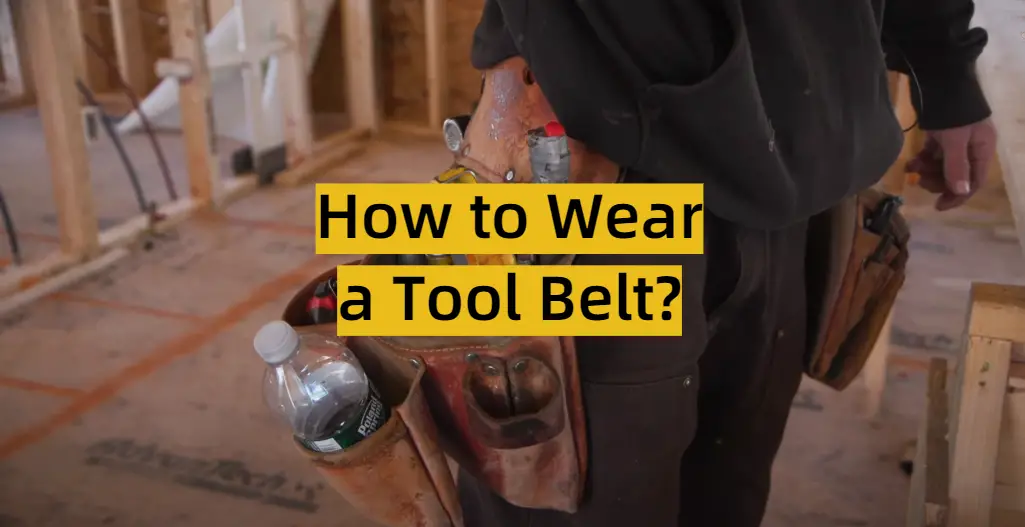




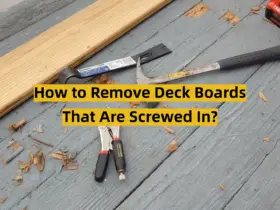
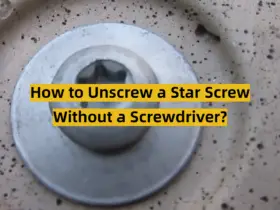
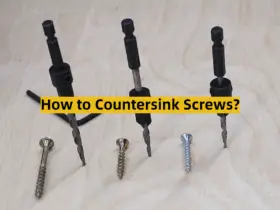
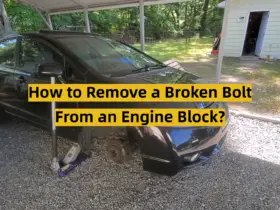
Wearing a tool belt effectively is all about finding the right balance. Personally, I’ve discovered that distributing the weight evenly across the hips by adjusting the belt’s position is key. This prevents strain on the back and ensures a comfortable and sustainable wear throughout the day.
It took some trial and error to figure out the optimal arrangement of tools on my tool belt. Placing frequently used tools within easy reach and organizing them based on usage frequency has significantly improved my efficiency on the job. It’s a personal puzzle that evolves with each project.
Adjustability is crucial when it comes to tool belts. I’ve learned that investing in a belt with adjustable straps and pouches allows for a customized fit. This adaptability ensures that the tool belt stays snug during various movements, preventing the need for constant readjustments.
Choosing a durable and breathable material for the tool belt has made a noticeable difference. Leather, in my experience, strikes a good balance between toughness and comfort. Its ability to withstand wear and tear while providing ventilation is crucial for long hours on the job.
The height at which the tool belt sits on the hips is a personal preference, but I’ve found that having it slightly above the hips prevents discomfort when bending or sitting. Experimenting with different heights helped me discover the most comfortable position for my workflow.
A snug but not overly tight fit is essential. Too tight, and it becomes uncomfortable; too loose, and the tools may shift excessively, affecting both balance and accessibility. Finding the right tension for the straps has been a game-changer in terms of all-day wear.
Considering the type of tools you frequently use is essential for efficient wear. For heavier tools, opting for reinforced pouches with sturdy stitching has prevented wear and tear over time. Customizing the tool belt to accommodate specific tools ensures a smooth workflow.
Weather considerations play a role in how I wear my tool belt. In hot weather, I’ve learned the importance of breathable padding and lightweight materials to prevent discomfort and sweating. Adapting the tool belt to different weather conditions has made a significant impact on overall wearability.
Discovering the ideal way to wear a tool belt has been a journey of trial and error. One key lesson I’ve learned is the importance of weight distribution. Balancing the tools evenly across the hips by adjusting the positioning of the belt has significantly reduced strain on my back, ensuring a comfortable and sustainable wear throughout the day.
The arrangement of tools on the tool belt is like crafting a personal toolkit. Through experience, I’ve realized that organizing tools based on usage frequency and accessibility is crucial. This strategic placement allows for a smoother workflow, saving time and energy on the job.
Opting for a tool belt with adjustable features has been a game-changer. The ability to customize the fit by adjusting straps and pouches is essential for comfort. This adaptability ensures that the belt stays secure during various movements, eliminating the need for constant readjustments.
Material choice plays a significant role in the comfort and durability of a tool belt. In my experience, leather strikes the right balance between toughness and comfort. Its ability to withstand wear and tear while providing ventilation is crucial for long hours on the job.
Experimenting with the height of the tool belt on the hips has revealed a personal preference for slightly above the hips. This positioning minimizes discomfort during bending or sitting, contributing to a more ergonomic and efficient wear.
Achieving the perfect tension in the straps is a crucial aspect of wearing a tool belt comfortably. I’ve found that a snug but not overly tight fit prevents discomfort and ensures that the tools stay securely in place without excessive shifting.
Considering the types of tools used regularly is a practical approach to optimizing a tool belt. For heavier tools, reinforced pouches with sturdy stitching have proven essential to prevent wear and tear over time. Customizing the tool belt based on specific tool requirements enhances overall functionality and convenience on the job.